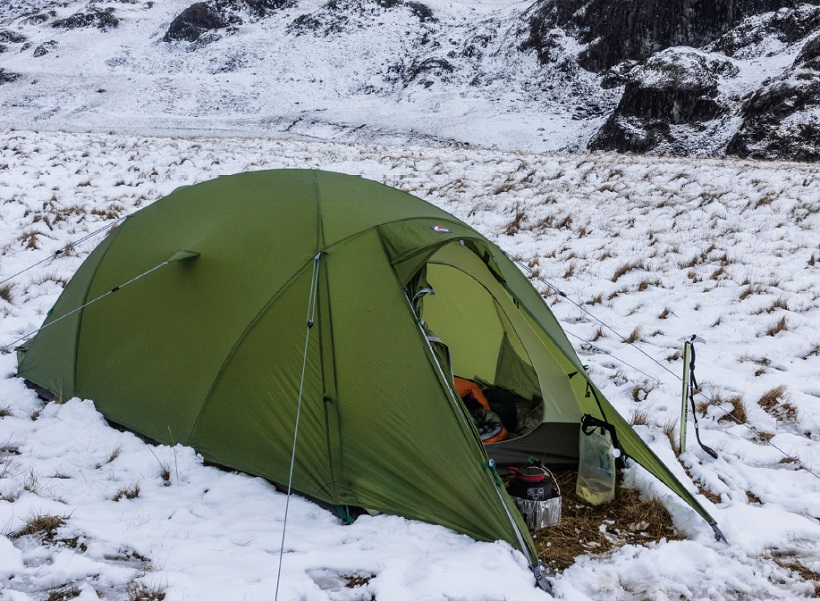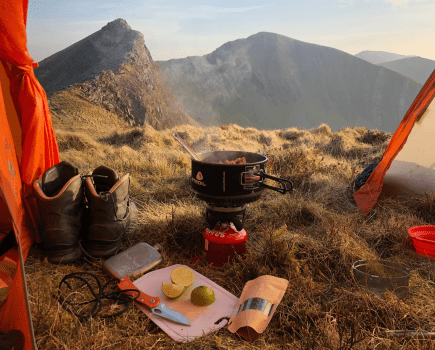Chris Townsend explains what gear he relies on during his winter camps in the Cairngorms, including the tents, sleeping bags, stoves and sleeping mats
Tent
A good winter tent needs to resist snowfalls and strong winds. Tents with a strong pole structure like geodesic domes will do this, as will single-pole pyramids. A solid inner to keep out winds and spindrift and keep warmth in is better than one with mesh panels. More room than in summer is good too – winter sleeping bags and clothing are bulky and more time is spent in the tent. Being able to move around and avoid contact with the walls, which may be damp, increases comfort. To minimise condensation good ventilation options are valuable though in a blizzard everything may have to be closed.
Chris’s recommendations: Terra Nova Quasar, Force Ten Mtn 2, Hilleberg Soulo, TarpTent Scarp 2 with crossover poles, Nigor Wickiup 3
Sleeping Bag
The temperature rating is key to a good winter sleeping bag. -10ºC to -15ºC is probably the best rating range for most people in UK winters. But if you’re a cold sleeper choose a bag with a rating at least 5-10 degrees lower. A winter bag should also have a good hood that closes closely round the head, a roomy boxed foot and a thick baffle behind the zip. It should be roomy enough to wear warm clothes inside if necessary too.
Chris’s recommendations: Rab Neutrino 800, Mountain Equipment, Glacier 750, PHD Hispar 500, Tundra Pure & Dry -20.
Sleeping Mat
A warm sleeping mat is essential in winter as much body heat can be lost through an inadequate mat. Mats fi lled with down or synthetic insulation are superbly comfortable but relatively heavy and bulky. Closed cell foam can’t puncture but isn’t that comfortable and is even bulkier. Air beds without any filling aren’t warm enough. A full-length mat is a good idea, or else you can use a sitmat under your feet.
Chris’s recommendations: Therm-A-Rest NeoAir XTherm, Exped DownMat UL 7, Multimat Backpacker 9, Sea to Summit Comfort Light Insulated
Stoves
In winter a stove needs to work well in sub-zero temperatures. More fuel is needed to heat very cold water and melt snow than in summer so stoves should be fuel efficient. Ones with heat exchanger pans are good for this. A windshield is essential both to keep off the wind and to trap heat next to the pot. Controls need to be usable when wearing gloves so stoves should have large levers and knobs. Liquid fuel –petrol and paraffin – stoves are excellent in the cold. Most gas cartridge stoves aren’t so good unless the stove can be used as a liquid feed one or has a heat exchanger. Meths stove work okay but are slow, especially for snow melting.
Chris’s recommendations: Optimus Vega, MSR Reactor, Primus Spider Stove Set, Jetboil Joule
RELATED: What gear to carry when walking in winter
Image by Chris Townsend








